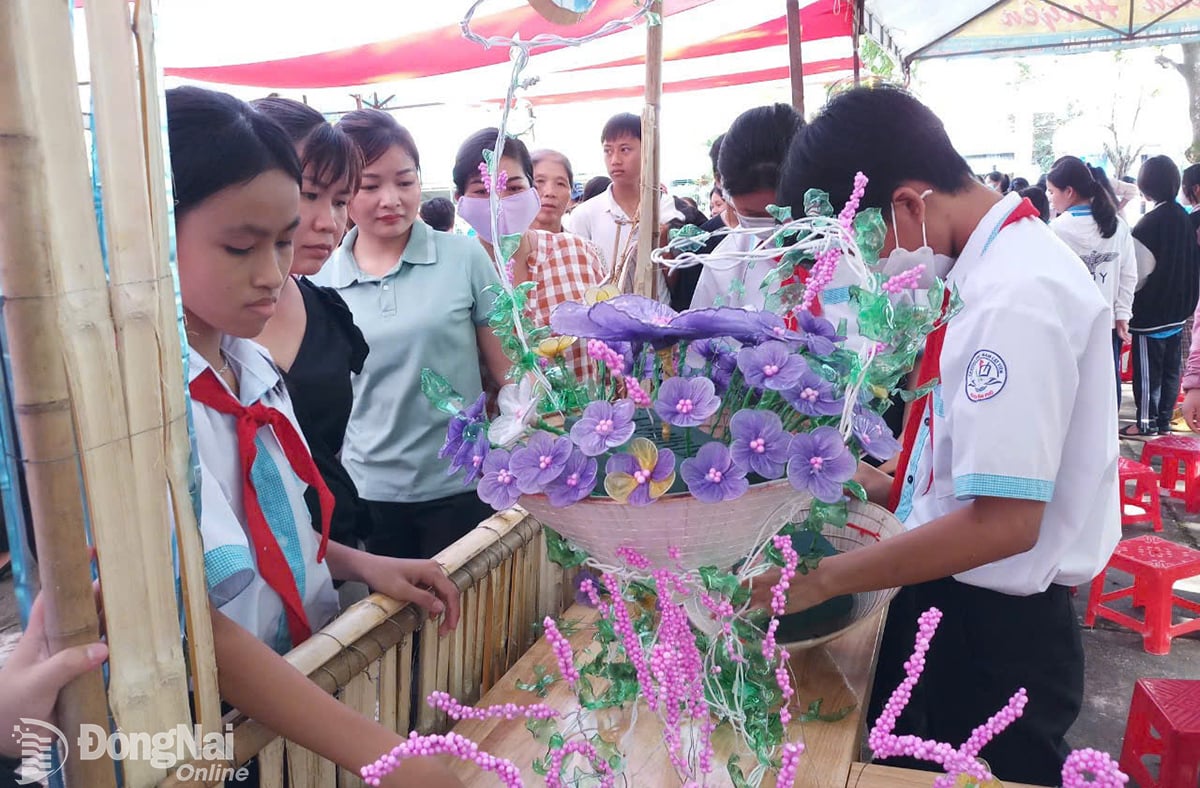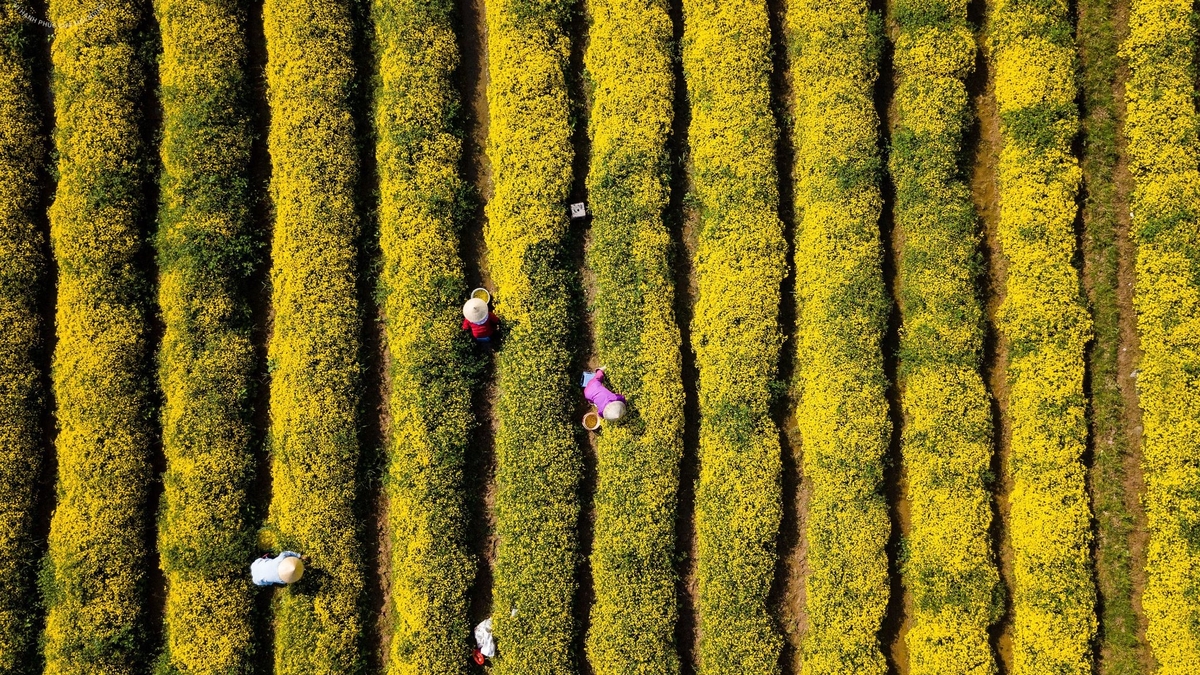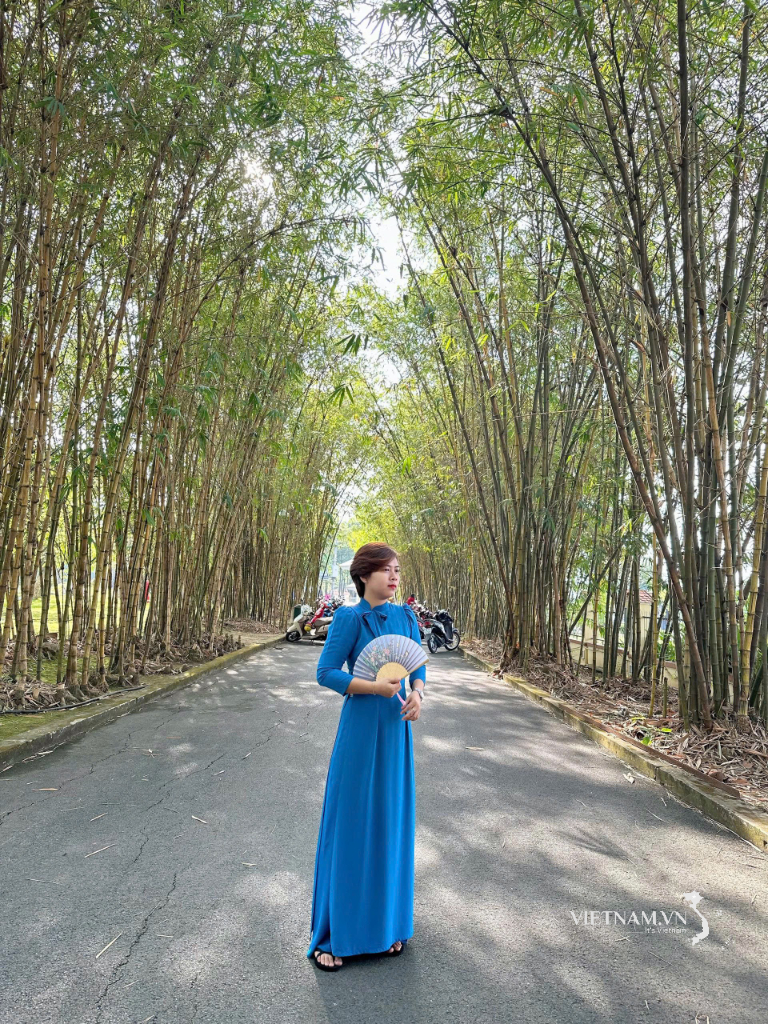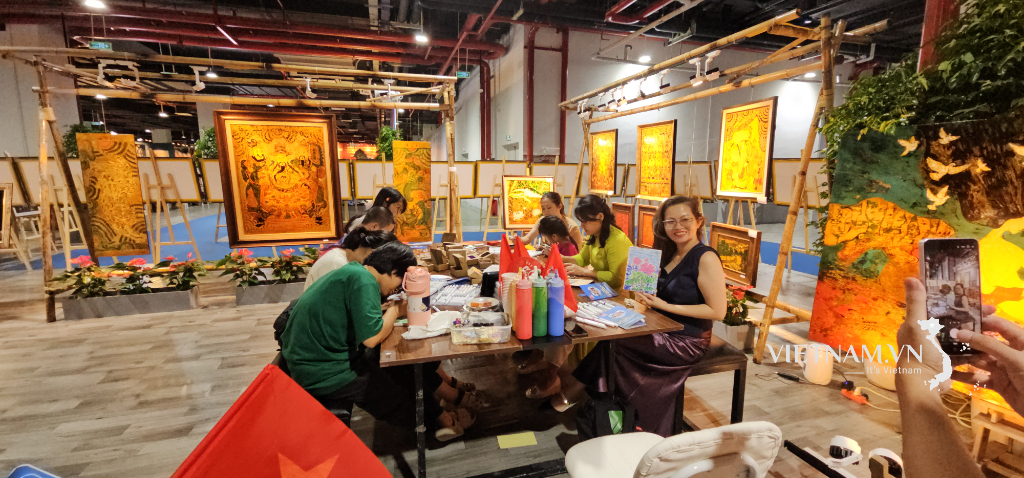 |
| Students from Nam Cat Tien Primary and Secondary School (Tan Phu district) participate in a sculpting activity using recycled materials. Photo: Provided by the school. |
This approach not only helps overcome difficulties in sourcing materials, saves costs, and contributes to environmental protection, but also helps students unleash their unlimited creative potential.
Addressing difficulties in teaching Art.
Ms. Tuyet Anh stated that when she first implemented the Art subject according to the 2018 General Education Program, she encountered many difficulties and uncertainties. While the old Art program focused primarily on painting, the new program has higher practical requirements and is more application-oriented. Students must design and create 3D products of various types, requiring the use of different materials. This leads to difficulties regarding materials and costs, especially for schools in remote areas.
Based on that experience, she guided students in using recycled materials for their lessons. To have useful recycled materials for art class, before each topic/project, teachers must plan to encourage students to collect and classify used materials; guide them in processing and storing them hygienically; and guide them in creative design, ensuring aesthetics and suitability with the materials.
Ms. TRAN THI TUYET ANH presented a thematic report at the district level on the topic "Developing creative and aesthetic abilities for students through the subject of Fine Arts".
In addition, students are guided to utilize recycled materials to participate in extracurricular activities such as STEM Day, environmental protection awareness campaigns, competitions, and contests. As a result, students have learned to collect and use recycled materials to create many useful and aesthetically pleasing products such as vases, pencil cases, and pictures. These products are used to decorate classrooms, beautify the school grounds, and are even purchased by parents to decorate their homes and workplaces.
Ms. Tuyet Anh said: “In the first year of implementing the new program, I was still unfamiliar with using recycled materials in teaching, and students faced many difficulties in creating artwork because they were rigidly following the suggested materials in the textbook. From the second year onwards, I had students replace the materials with other materials that could be used for corresponding shapes, expanding the range of materials and encouraging creativity based on the materials they found, mainly recycled materials.”
As a result, students' artwork is diverse in genre, aesthetically pleasing, and highly practical. Thus, using recycled materials in art class solves the difficulties of raw materials, saves costs, and educates students about environmental protection.
Classifying recycled materials for use in Art class.
For each art lesson, Ms. Tuyet Anh doesn't require fixed materials, but allows students to choose alternative materials, helping them to prepare proactively and more easily. This flexibility in using different materials stimulates creative thinking in each student.
Ms. Tuyet Anh categorizes the materials used in Art into three groups: organic materials that can be dried, no longer retain water, and can be stored for a long time (rice, beans, corn, leaves, eggshells, etc.); inorganic materials that are hard, brittle, and easily broken (glass bottles, metal cans, metal bottle caps, etc.); and soft, flexible materials (plastic bottles, beer cans, soft drink cans, plastic bottle caps, etc.).
(nylon, plastic straws, plastic spoons, etc.). All materials, after collection and sorting, must be washed and dried to ensure hygiene for reuse.
According to Ms. Tuyet Anh, to avoid excessive waste materials that could turn the classroom into a recyclable waste dump and detract from its aesthetics, teachers should regulate the amount of materials needed for each lesson topic. Teachers should also require students to identify and avoid collecting plastic and glass bottles containing hazardous substances that have been warned against by manufacturers.
Ha Vu Thao Nguyen, a student in class 7A2 at Nam Cat Tien Primary and Secondary School, expressed: “I feel very happy when I utilize recycled materials to create art products. This not only helps me express my creativity and dexterity, but also helps me cultivate patience and contribute to environmental protection. I realize that things that seem like they should be thrown away can still become unique and meaningful works of art.”
Meanwhile, Ho Thi Thu Hang said: “Initially, I found it very difficult to create sculptures in Art class, but when I worked with my friends and created beautiful products, I felt very happy because from discarded items that could harm the environment, we were able to make useful products. Besides studying in class, at home, I also repurpose plastic cans to make mini flower pots, use discarded cooking oil cans to make trash cans, and make nightlights from plastic bottles…”
Sea Swallow
Source: https://baodongnai.com.vn/xa-hoi/202504/tan-dung-vat-lieu-tai-che-trong-day-va-hoc-mon-my-thuat-c346352/





![[Photo] Prime Minister Pham Minh Chinh presides over the conference announcing the establishment of the International Finance Centre in Vietnam.](/_next/image?url=https%3A%2F%2Fvphoto.vietnam.vn%2Fthumb%2F1200x675%2Fvietnam%2Fresource%2FIMAGE%2F2025%2F12%2F21%2F1766309817714_ndo_br_dsc-3400-jpg.webp&w=3840&q=75)

![[Photo] Prime Minister Pham Minh Chinh presides over a meeting on private sector economic development.](/_next/image?url=https%3A%2F%2Fvphoto.vietnam.vn%2Fthumb%2F1200x675%2Fvietnam%2Fresource%2FIMAGE%2F2025%2F12%2F20%2F1766237501876_thiet-ke-chua-co-ten-40-png.webp&w=3840&q=75)
























































































Comment (0)